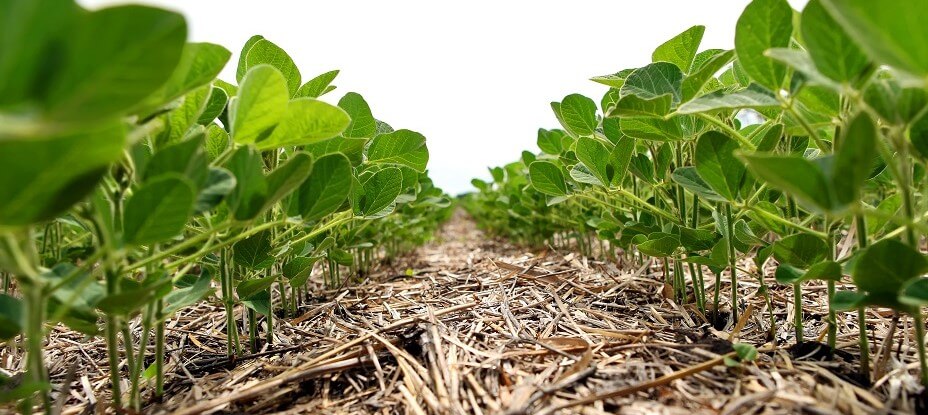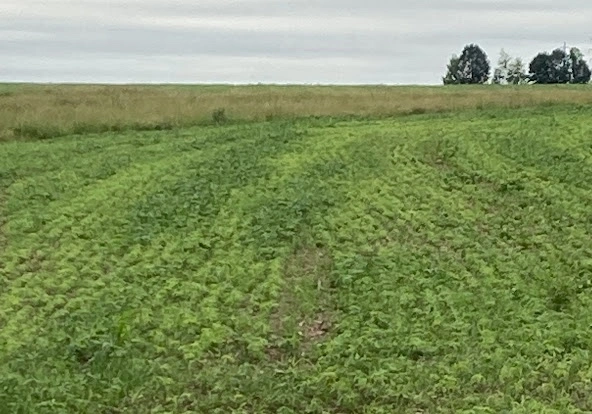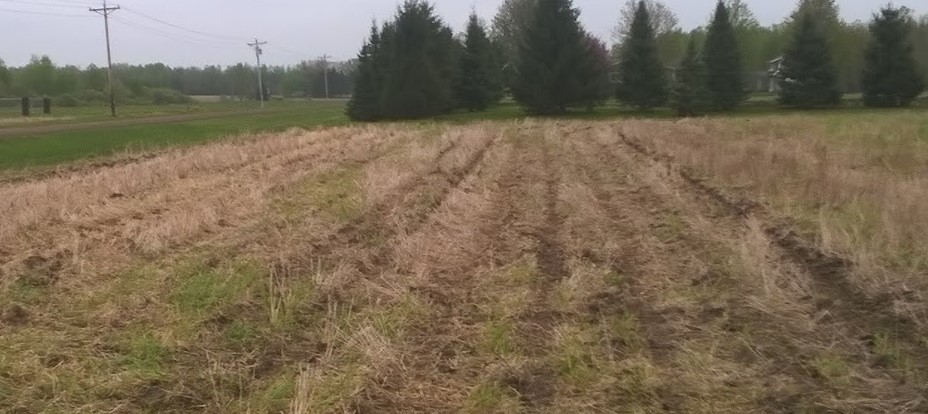Chemical dependency and no-till practices: Is it real? If so, is it a concern?
by Ryan Stockwell
Dig into the science on the common assumption of higher herbicide use when implementing no-till.

While talking with my uncle, an ag lender, the other day I was confronted by a common assumption when it comes to no-till: “If you no-till, you have to use more herbicides.” I was struck by the conclusiveness in his voice. His observation means he was operating on three assumptions: no-till requires a lot of herbicides, tillage requires significantly less herbicides, and herbicide usage is the key measure by which to gauge no-till for its impact on the environment or bottom line. The simple reality is each of these assumptions misses important facts or realities that, when fully considered, would invalidate each of the assumptions.
Let’s take each assumption one by one:
1. No-till requires a lot of herbicides
The basis for this assumption is that, by foregoing tillage, a grower is eliminating an efficient tool to terminate weeds, and therefore must mean no-tilled soils require an increased reliance on herbicides. What is missed here is the full range of other weed management tools available to growers. Certainly tillage and herbicides are the most common, but other effective—and perhaps more beneficial—strategies include residue management, crop rotation, and cover crops.
2. Tillage requires significantly less herbicides
While tillage can terminate existing weeds, tillage can also create loose, bare ground—the perfect seedbed for weed seeds to germinate. In essence, tillage increases weed germination and growth. No-till minimizes weed germination and growth by utilizing residue on the soil surface (among other strategies mentioned previously). Another reality here is that nature abhors a vacuum—any farming strategy that seeks to maintain bare soil between cash crops (both between rows and between cash crop years) will require a higher use of weed management practices and tools to inhibit weeds… especially when that bare soil is loose. Keeping the soil covered significantly reduces weed germination and growth, reducing the need to implement more weed control measures.

Tilled corn ground invites weeds

Weeds get head start over soybeans due to tillage and bare ground before soybean emergence

Field with terminated cover crops with minimal weeds present
Herbicide usage is a key measure by which to gauge no-till for it’s impact on the environment or bottom line
Herbicide usage can certainly negatively impact the environment when overused. But focusing on this means ignoring the environmental impacts from tillage practices, including significant soil erosion and water quality degradation. Also, this assumption discounts or ignores the operating costs associated with tillage. From fuel, to labor, to equipment ownership, to maintenance, every tillage pass costs between $16 and $25 per acre and often much more as fuel prices increase.
Additionally, let’s not forget about all of the productivity benefits of reducing tillage or implementing no-till has for a farm, including:
- Improved soil structure creating better drainage of excess moisture
- Increased water holding capacity to survive droughts
- Improved soil biology and soil organic matter to increase soil productivity
- Host of other production benefits
No-till benefits a farm in many ways, from profitability to soil health, and there is more to consider than herbicide use assumptions.
By Ryan Stockwell, Indigo Ag Senior Manager of Grower Engagement and Wisconsin Farmer
Citations
-https://www.sciencedaily.com/releases/2021/08/210823125646.htm
-https://www.mdpi.com/2077-0472/7/5/43/htm
-https://www.researchgate.net/publication/348548836_Effect_of_Crop_Residues_on_Weed_Emergence
-https://crops.extension.iastate.edu/blog/bob-hartzler-meaghan-anderson/impact-cover-crops-weed-management
-https://www.sciencedirect.com/science/article/pii/S1658077X1400023X
This article may include information from third-party sources or other information that Indigo may not independently verify. Carbon quantification methods, processes and understandings are in their nascency and subject to change and continuous development. The information contained herein is for general informational purposes only and may be based on generally applicable assumptions that may not be applicable to any individual operation. Actual results may differ among growers and farms based on a large number of variables. Each operation should independently consider the financial implications and all potential risks and benefits of the use of any agronomic practice. Any payments under Carbon by Indigo are subject to multi-year vesting and are contingent on continued long-term maintenance of regenerative agricultural practices and soil carbon levels. All Carbon Credits generated are subject to buffer pool holdbacks required by third-party crediting; participants will not receive payments for such holdback. Neither Indigo nor its representatives or affiliates makes any representations, warranties or guarantees as to any specific outcomes (agronomic, financial or otherwise) in connection with any recommendations, calculations or predictions. Terms, conditions, limitations and eligibility requirements apply. See program agreement for additional details regarding Carbon by Indigo.
Farmers like you are getting paid to implement practices that improve soil health. With skyrocketing input costs, see how covers help.
You might also be interested in:
Neither Indigo nor any of its affiliates makes any representations, warranties or guarantees as to any specific results or outcomes, including, without limitation, with respect to soil health outcomes or any minimum amount of greenhouse gasses sequestered or number of carbon credits generated. Participation in Carbon by Indigo is subject to the terms, conditions and limitations of the program contained in the applicable enrollment agreement. Any payments under Carbon by Indigo are subject to multi-year vesting and are contingent on continued long-term maintenance of regenerative agricultural practices and soil carbon levels. All Carbon Credits generated are subject to buffer pool holdbacks required by third-party crediting; participants will not receive payments for such holdback. Not available in all areas.
500 Rutherford Ave, Boston, MA 02129 | 844.828.0240 | info@indigoag.com